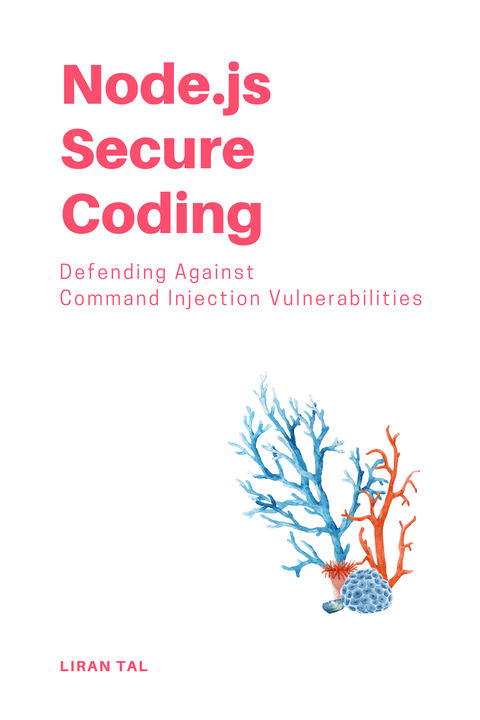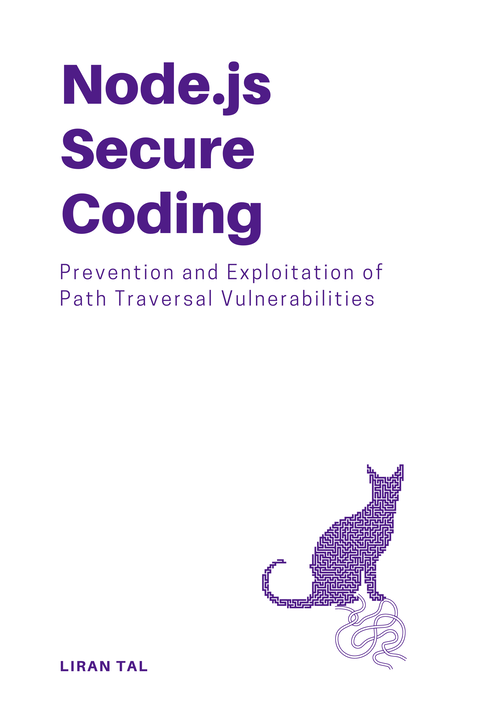~ 8 min read
Securing Your Node.js Apps by Analyzing Real-World Command Injection Examples

In the vast digital landscape of web applications and online services, security is paramount. Developers and organizations invest significant resources to safeguard their systems from potential threats, but the ever-evolving nature of cyber attacks poses a constant challenge. One particularly dangerous and repeated vulnerability that has garnered many CVEs disclosed for npm packages in the Node.js ecosystem in recent years is that of Command Injection.
Command Injection Vulnerabilities: A Lurking Threat
Command injection vulnerabilities are not an abstract concept but a real and prevalent threat in the Node.js ecosystem.
What is seemingly an obvious security risk such as demonstrated in this code:
var exec = require('child_process').execSync;var platform = require('os').platform();
module.exports = function () { var commands = Array.isArray(arguments[0]) ? arguments[0] : Array.prototype.slice.apply(arguments); var command = null; commands.some(function (c) { if (isExec(findCommand(c))) { command = c; return true; } }); return command;};
function isExec(command) { try { exec(command, { stdio: 'ignore' }); return true; } catch (_e) { return false; }}function findCommand(command) { if (/^win/.test(platform)) { return 'where ' + command; } else { return 'command -v ' + command; }}Is actually an often overlooked coding practice by JavaScript developers day to day.
The above command injection vulnerability was found in the find-exec npm package with as many as over 2,000 weekly downloads. Not too many, but enough to put some users at risk. The consequences of command injection vulnerabilities can be devastating, ranging from data breaches to complete system compromise.
What Is Command Injection? In short, at its core, command injection occurs when an application allows unsanitized user input to be executed as system commands. These commands can manipulate the underlying system, potentially leading to unauthorized access, data breaches, or even complete system compromise.
Real-world Examples of Command Injection Vulnerabilities
To truly understand the severity of command injection vulnerabilities and the urgency of addressing them, we must examine real-world examples. While theoretical discussions and abstract concepts are valuable, nothing drives the point home like concrete instances where open-source npm packages were found vulnerable to command injection due to insecure coding.
1. The Equifax Data Breach (2017)
Affected Application: Apache Struts2 framework used by Equifax Attack Vector: Command injection via unpatched vulnerability Outcome: One of the most significant data breaches in history, exposing sensitive personal and financial data of nearly 147 million people.
Details: The Equifax breach serves as a sobering reminder of the potential impact of command injection vulnerabilities. Attackers exploited a known vulnerability in Apache Struts2 to execute arbitrary commands on Equifax’s servers. This breach had far-reaching consequences, resulting in legal repercussions and widespread public concern.
Guy Podjarny, Snyk’s Co-founder and president wrote an analysis on how open source vulnerabilities tripped Equifax and suggesting the adoption of Software Composition Analysis (SCA) tools such as Snyk to mitigate risks of vulnerable open-source dependencies, that may introduce command injection vulnerabilities. A year later, Simon Maple, heading up the AI Advocacy at Snyk, wrote a follow-up article on how Equifax could have prevented the breach.
2. Shellshock Vulnerability (2014)
Affected Application: GNU Bash (a common Unix shell) Attack Vector: Command injection via environment variables Outcome: Widespread vulnerability impacting millions of Unix-based servers and systems.
Details: The Shellshock vulnerability showcased the global reach of command injection. Attackers exploited flaws in the way Bash processed environment variables to execute arbitrary code. This incident underscored the importance of timely software updates and patch management.
Joey Holliday’s write-up on the Shellshock vulnerability in his shellshock GitHub repository is a recommended step-by-step breakdown of the vulnerability and its impact.
3. Yahoo Data Breach (2013-2014)
Affected Application: Yahoo Mail Attack Vector: Command injection via specially crafted email attachments Outcome: Massive data breach involving the compromise of over three billion Yahoo accounts.
Details: Yahoo’s data breach was a result of command injection vulnerabilities introduced through malicious email attachments. The breach’s scale and severity highlight the need for robust input validation and secure email handling.
4. ImageTragick: The ImageMagick Vulnerability (2016)
Affected Application: ImageMagick, a popular image processing library Attack Vector: Command injection via specially crafted image files Outcome: Potential system compromise of websites and servers using ImageMagick for image processing.
Details: A command injection vulnerability, known as ImageTragick in allowed attackers to execute arbitrary code by manipulating image files. This incident serves as a reminder that vulnerabilities can lurk in unexpected places, emphasizing the need for thorough code audits.
5. Cisco ASA Vulnerability (2018)
Affected Application: Cisco Adaptive Security Appliance (ASA) Attack Vector: Command injection via VPN login fields Outcome: Exposure of sensitive VPN configuration data.
Details: A command injection vulnerability in Cisco ASA devices allowed attackers to execute commands through the VPN login page. This incident highlights the critical importance of securing network infrastructure against command injection threats.
These real-world examples underscore the severity and ubiquity of command injection vulnerabilities. By studying cases of vulnerable npm packages, Node.js developers can better grasp the implications of insecure coding practices and implement measures to protect their applications. For that end, Liran Tal authored the book that follows those exact practical hands-on secure coding practices: Node.js Secure Coding: Defending Against Command Injection Vulnerabilities.
Case Study - fs-git Command Injection Vulnerability
Let’s dive into a detailed analysis of a real-world command injection vulnerability that affected the fs-git npm package, version 1.0.1. This case study sheds light on how a seemingly innocuous module can become a critical security risk when command injection vulnerabilities are present. We will explore the background of the application, delve into the specifics of the vulnerability, and examine the consequences it wrought.
fs-git is an npm package for Node.js designed to provide a file system-like API for Git repositories. It aims to make interacting with Git repositories more intuitive and accessible for developers. As a module intended to simplify Git-related tasks, it garnered a user base that included a wide range of developers and projects.
👋 Just a quick break
I'm Liran Tal and I'm the author of the newest series of expert Node.js Secure Coding books. Check it out and level up your JavaScript
The vulnerability we’re investigating here is identified as CVE-2017-1000451 and was discovered in the fs-git module, version 1.0.1. This module relies on the child_process.exec function to execute system commands. However, the buildCommand method used to construct the exec strings lacked proper data sanitization, making it vulnerable to command injection.
Snippet of the vulnerable code in fs-git:
showRef(): Promise<RefInfo[]> { let command = this._buildCommand("show-ref"); return new Promise((resolve: (value: RefInfo[]) => void, reject: (error: any) => void) => { child_process.exec(command, { maxBuffer: maxBuffer }, (error, stdout, stderr) => { if (error) { reject(error); } else { let list = stdout.toString("utf8").split("\n").filter(line => !!line); let resultList: RefInfo[] = list.map(str=> { let columns = str.split(" ", 2); return { gitDir: this.path, ref: columns[0], name: columns[1] }; }); resolve(resultList);Eventually, the code would also call the _buildCommand function with string concatenation mixed with user-provided data:
_buildCommand(...args: string[]): string { return `git --git-dir=${this.path} ${args.join(" ") }`;The attack unfolded when an attacker manipulated data passed to the fs-git module to craft malicious inputs that exploited the command injection vulnerability. By providing carefully crafted inputs, the attacker was able to inject arbitrary commands into the system. This allowed them to execute unauthorized commands with the privileges of the running process, potentially compromising the host system.
The consequences of this vulnerability were far-reaching. Attackers could execute arbitrary commands, which might include actions like exfiltrating sensitive data, modifying files, or even disrupting the normal operation of the system. For projects and applications relying on fs-git, this vulnerability posed a significant security risk.
The fs-git case study highlights the critical importance of input validation and data sanitization in preventing command injection vulnerabilities. Even seemingly innocuous modules can introduce severe security risks if they do not follow secure coding practices. Developers and maintainers must exercise caution when dealing with user-provided data and always employ best practices for data validation and sanitization.
Additional Resources to Command Injection Vulnerabilities
In this blog post, we set out to explore the ins and outs of command injection vulnerabilities in Node.js applications. We dissected real-world examples, delved into the intricacies of how these vulnerabilities occur, and analyzed the devastating consequences they can unleash.
Now, as you grasp the significance of securing your Node.js applications against command injection, it’s time to take action. The world of application security is ever-evolving, and it demands vigilance and expertise to safeguard your projects.
For those of you who are eager to dive deeper into the realm of secure coding and fortify your Node.js applications, I have an invaluable resource to offer:
Introducing Node.js Secure Coding: Defending Against Command Injection Vulnerabilities 🦄
My book provides a comprehensive guide to understanding, identifying, and mitigating command injection vulnerabilities in Node.js. With practical insights, real-world examples of vulnerable npm packages, and expert guidance, this book equips you with the knowledge and skills needed to bolster your application’s security.
Don’t leave your Node.js applications vulnerable to attacks. Gain the expertise you need to protect your projects and your users. Get your copy of “Node.js Secure Coding: Defending Against Command Injection Vulnerabilities” today by visiting https://www.nodejs-security.com.
With the knowledge you acquire from this book, you’ll not only enhance your development skills but also contribute to a more secure and resilient software landscape. Thank you for joining us on this journey, and I look forward to seeing you in the world of secure coding.

